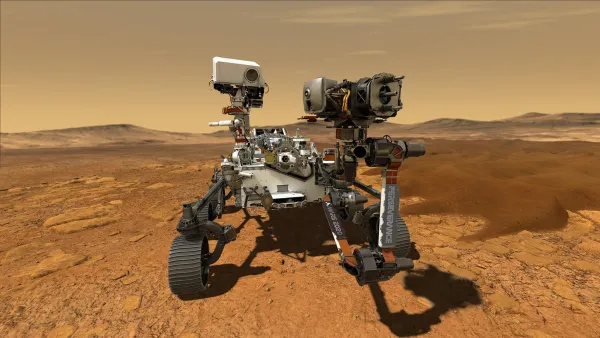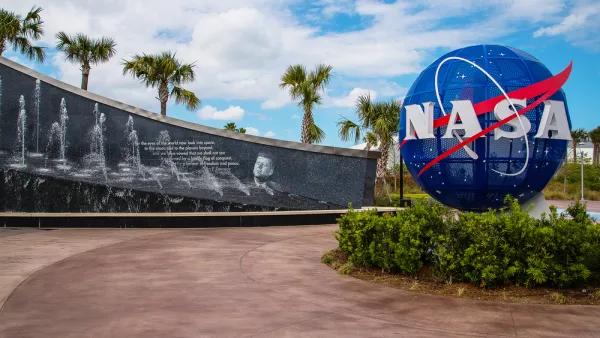Colonization of the Red Planet is a hot topic of late. If someone were to try to take it from fantasy to reality, Earth's urban planners have a few tips that could help set future Martian cities up for success.

It seems like every billionaire nowadays wants to send ships to colonize Mars. Then, when they arrive, they want to build a city. In the case of Elon Musk, it’s not just one city, but a network of cities for millions of people. Musk could sure use the advice of an urban planner.
The planning and building of cities all over Earth is considered by many to be humankind’s most important accomplishment, perhaps only to be surpassed by such a feat on another planet. But if a bunch of billionaires (and maybe government space agencies) are going to try make a go of living on the Red Planet, some urban planning tips might be helpful:
1. Create spectacular public spaces
If there’s one thing we can learn from urban settlement on Earth it’s that we are a social species who needs places to gather. Earlier Greco-Roman planners understood this, that is why tourists still flock to the Roman Forum (Rome, Italy) – millions each year. But design matters and proportion and scale matter, the public spaces that were built hundreds or thousands of years ago but are still welcoming and inviting, these are the kinds of places we want to build in Martian cities: with well-defined edges, with a size and scale where people can see each other across the place and be seen by others in surrounding buildings.
2. Go underground!
Mars is not a very welcoming place for people: the air is poisonous to breathe, radiation on the surface is deadly, and wind storms kick up dust that blankets the planet. The answer: go underground. We can take advantage of craters to build structures underground or even in existing lava tubes just below the Martian surface. Transportation systems – trains and walking-biking paths, can also be built through underground tunnels, where engines and wheels are protected from that omnipresent dust and people can be provided with fresh air to breathe and protected from radiation.
3. Spirituality matters: Infuse the metaphysical into city design
A reading of urban history on Earth tells us that considerations of the body and mind are important but matters of the soul reign supreme. Most of the earliest urban planning guides, going back to Vitruvius’ Ten Books of Architecture (30 BCE) viewed religious and spiritual matters as foundational. The Chinese K’ao-kung Chi (circa 500 BCE) required urban designs to conform to the magic square street layout, evoking cosmological forces. Martian cities need to touch people at that deep religious level; otherwise, people might just turn tail and head back home to Earth!
4. Mixed uses make sense beyond Earth
An increasing trend in U.S. urban development and planning is the mixing of residential and commercial uses in a single building, often looking like 1) ground floor retail, 2) second story office, and maybe 3) residential on upper floors. This same mixing of activities works on Mars, too. Initial speculation has been growing that a range of commercial functions would operate in early Martian cities, like mining, tourism, private research, and support functions. Over time, settlements could be developed enough that folks might get involved in trade operations within their own borders and with other settlements. To accommodate these activities, buildings can be designed to host both housing and commercial uses, mixed together vertically like much of traditional downtown urban planning for the last three-hundred years.
5. Robots are excellent construction workers
Who is going to build these Martian cities? At the beginning, construction will have to be accomplished remotely or by robot prior to human settlement. That way we can reduce potential human harm, building and living in the harsh conditions of Mars might be just too much. Emerging technologies like 3D printing have proven to be feasible for building construction: the Vulcan II printer built 200 single-family homes in a new development in Mexico, each only taking 24 hours to complete. Scientists believe these kinds of printers can use in situ resources, including Mars regolith (rocks and dirt on the planet’s surface) as their raw building material.
To all the billionaires and space agencies out there, hope these five ideas for building your very first city on Mars are helpful.
Justin B. Hollander, PhD, FAICP, is a professor in the Department of Urban and Environmental Policy and Planning at Tufts University and author of The First City on Mars: An Urban Planner’s Guide to Settling the Red Planet (Springer Praxis, 2023).

National Parks Layoffs Will Cause Communities to Lose Billions
Thousands of essential park workers were laid off this week, just before the busy spring break season.

Retro-silient?: America’s First “Eco-burb,” The Woodlands Turns 50
A master-planned community north of Houston offers lessons on green infrastructure and resilient design, but falls short of its founder’s lofty affordability and walkability goals.

Delivering for America Plan Will Downgrade Mail Service in at Least 49.5 Percent of Zip Codes
Republican and Democrat lawmakers criticize the plan for its disproportionate negative impact on rural communities.

Test News Post 1
This is a summary

Test News Headline 46
Test for the image on the front page.

Balancing Bombs and Butterflies: How the National Guard Protects a Rare Species
The National Guard at Fort Indiantown Gap uses GIS technology and land management strategies to balance military training with conservation efforts, ensuring the survival of the rare eastern regal fritillary butterfly.
Urban Design for Planners 1: Software Tools
This six-course series explores essential urban design concepts using open source software and equips planners with the tools they need to participate fully in the urban design process.
Planning for Universal Design
Learn the tools for implementing Universal Design in planning regulations.
EMC Planning Group, Inc.
Planetizen
Planetizen
Mpact (formerly Rail~Volution)
Great Falls Development Authority, Inc.
HUDs Office of Policy Development and Research
NYU Wagner Graduate School of Public Service




























